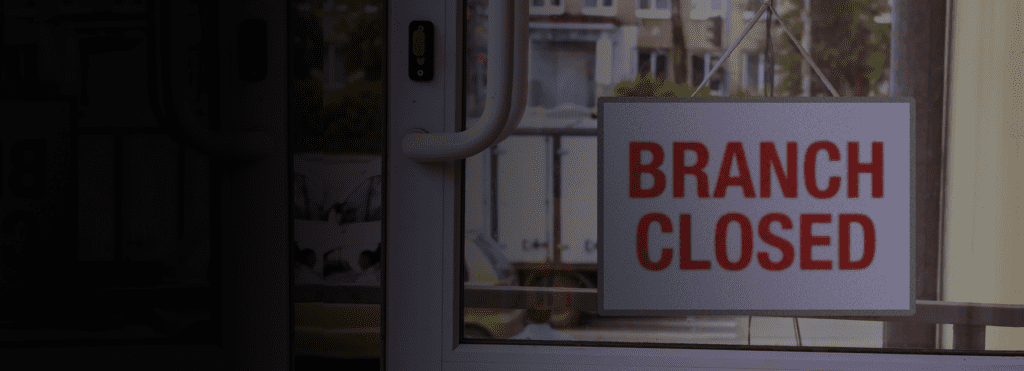The pandemic wreaked havoc on local economies and lives, but for banks it was a moment to speed up their steady retreat from traditional brick-and-mortar branches and services in cities and towns across the nation.
More than 4,000 physical bank branch locations have closed since March 2020, a new analysis from the National Community Reinvestment Coalition (NCRC) found. In the 20 months after COVID-19 reached US shores, banks closed about 200 branches per month on average – double the rate of the 20 prior months.
“The disappearance of local branches is a disruptive and ominous shift for vulnerable communities and communities of color that were already under-capitalized, under-invested and underserved by the financial system,” said Jesse Van Tol, President and CEO of NCRC. “This new data is a wake-up call for community leaders, policy makers and the financial sector itself. The current regime of laws and rules that are supposed to ensure that banks meet the needs of all the communities where they take deposits urgently needs to be modernized and strengthened.”
The study looked at bank branch data from 2017 through 2021 to identify the rapid shift in bank operations. One-third of the branches closed during that period were in a low- to moderate-income or a majority-minority neighborhood where access to branches is crucial to ending inequities in access to financial services.
Some cities and neighborhoods have been especially hard hit by branch closures. More than a dozen cities lost at least one in ten of their brick-and-mortar banks over the study period. In Oregon, the Portland metro area lost one in five bank branches since the start of 2017. In Phoenix, people living in less-wealthy and majority-minority neighborhoods now have 15 percent fewer bank branch locations available to them.
Some banks were more aggressive than others. Capital One has shuttered fully half of all its customer-facing physical locations since 2017, for example.
“Online and mobile banking is great for consumers and businesses when it works and when they can take advantage of it, but that’s simply not an option for everyone, and apps aren’t an adequate substitute for personal relationships with local bankers” said Jason Richardson, NCRC’s senior director of research and one of the study authors. “There are certain things an app can’t do. In communities that have historically faced higher barriers to banking services and struggled to build wealth, the personal relationship between local business owners and bankers in local branches can be essential to securing credit or renegotiating loan terms.”
The corporate consolidation of banking institutions is a key driver of these closures. Among the 25 banks with the largest number of branch closures, more than half either completed a merger during the study period or currently have one pending with regulators. While banks dismiss the impact of mergers on branch closures publicly, they assure investors that a key benefit of the merger for them is the elimination of ‘redundant’ branch locations. For instance,Truist shuttered more than 900 branches after the 2019 merger between BB&T and SunTrust that created the new brand.
Two-thirds of banking institutions have disappeared since the early 1980s — declining from nearly 18,000 in 1984 to fewer than 5,000 in 2021.
Those banks which remain look little like the banks of yesteryear. Namely, they are enormous: While 30 years ago it was rare to find a truly huge bank, today it’s difficult to find a small one. Just one in six banking institutions had more than $330 million in deposits in the mid-90s. Today, roughly half of all banks have at least $1.3 billion on their books.
“When the big national or regional brands pick up stakes and leave a neighborhood, the smaller operations that would once have picked up the slack simply no longer exist,” Richardson said.
The full NCRC report can be read here.



